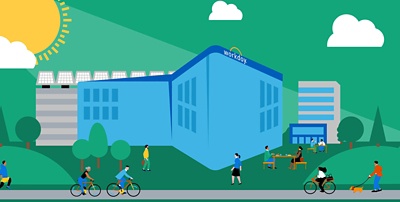3. Creativity goes a long way when replacing high-carbon energy with low-carbon options. Think about ways to get creative to help tackle something as big as climate change. We knew our impact would be greater if we were able to collaborate with others, so when the opportunity to pitch in for the first-ever small aggregate clean energy deal with Bloomberg, Cox Enterprises, Gap Inc., and Salesforce presented itself, we jumped on it. This collaboration is relatively unique for this type of sustainability investment, and we’re grateful for partners that see value in working together towards a common goal.
4. Investing in high-quality carbon offsets helps maximize your organization’s positive impact. Carbon offsets play a role in meeting climate goals for many organizations, but there are ways your organization can invest in offset projects that not only have environmental benefits, but social impacts, too. For example, we fund a water filtration project in Guatemala that helps provide local jobs in addition to providing clean water to families within the community, all while reducing harmful air pollution and carbon emissions. When your investments can benefit the planet and its people, it’s a win-win.
With something as important as the health of our planet and its people on the line, it’s our collective responsibility to do our part to reduce our impact on the environment. As for our own sustainability journey at Workday, we know we still have an opportunity to do more.
We’re proud of what we’ve accomplished so far, and look forward to continuing to bring innovation to the forefront of our sustainability journey. To learn more about our carbon management strategy, check out our “2019 Workday Global Impact Report.”







